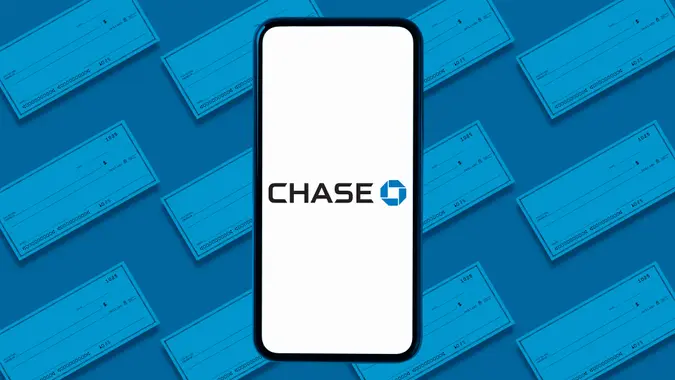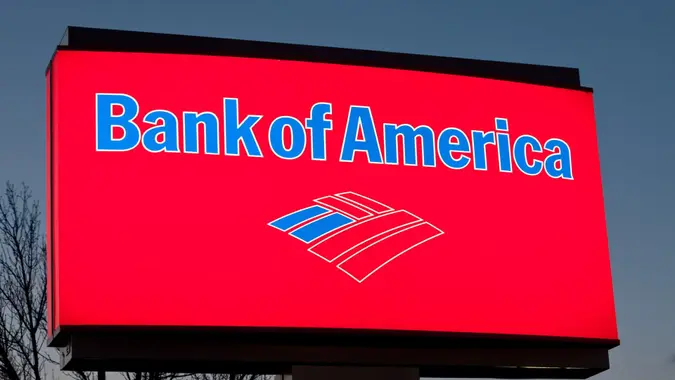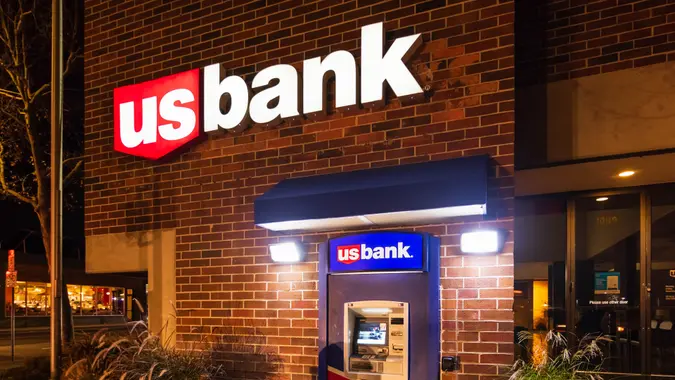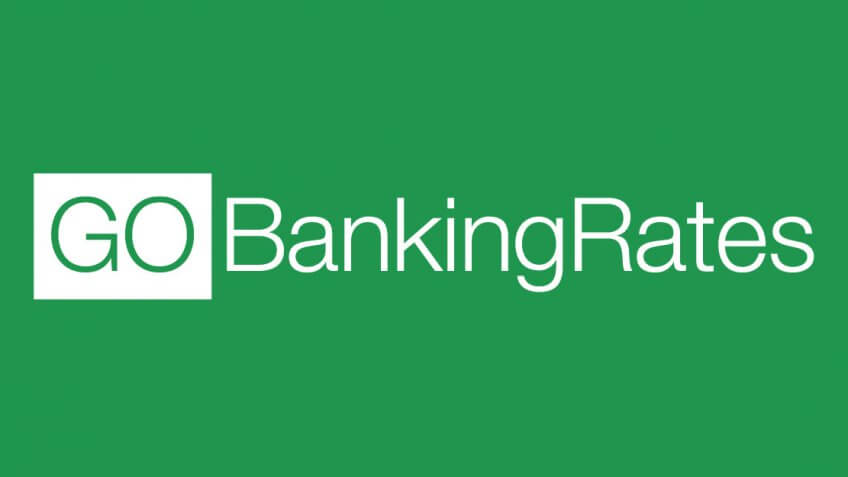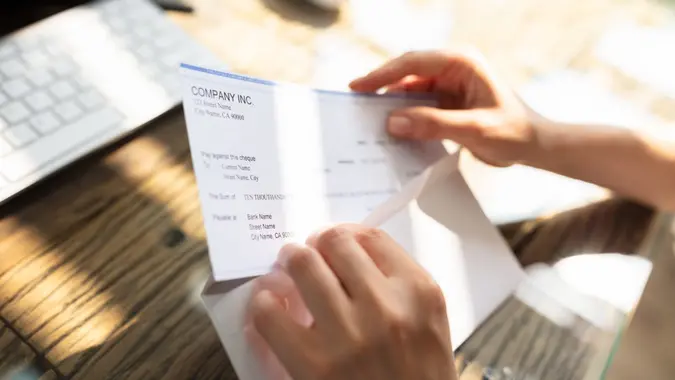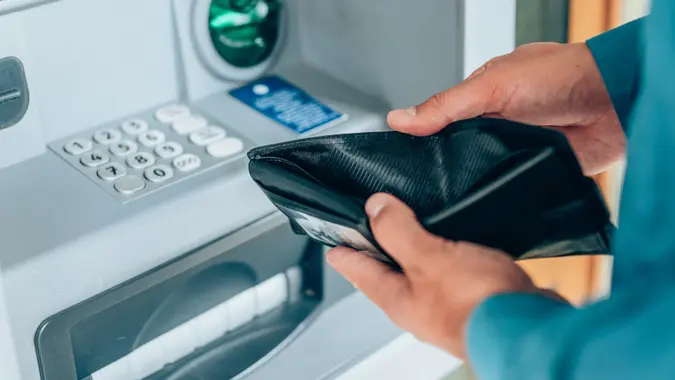Bank Draft vs Money Order: What’s the Difference?

Commitment to Our Readers
GOBankingRates' editorial team is committed to bringing you unbiased reviews and information. We use data-driven methodologies to evaluate financial products and services - our reviews and ratings are not influenced by advertisers. You can read more about our editorial guidelines and our products and services review methodology.

20 Years
Helping You Live Richer

Reviewed
by Experts

Trusted by
Millions of Readers
Ever found yourself needing a secure way to send money but you’re unsure whether to go with a bank draft vs money order? You’re not alone! Both options guarantee that the recipient gets paid, but each works a bit differently. Understanding how each function can save you money and help you pick the right option for your needs.
This guide breaks it all down, helping you make a smart choice when sending money securely.
What is a Bank Draft?
A bank draft, sometimes called a banker’s draft, is a payment order wherein banks guarantee the payment of the amount, similar to a check.
Unlike prepaid money orders, however, bank drafts are drawn against a bank account’s funds.
What is a Money Order?
A money order is a prepaid payment order, meaning the funds are provided upfront, ensuring guaranteed payment. They’re available from post offices, many retail stores and some financial institutions.
Money orders are a popular option for people who don’t have a bank account or for those who want to send money securely without tying it directly to a personal bank account.
Key Differences Between Money Orders and Bank Drafts
Both money orders and bank drafts are secure payment methods, each catering to different needs and offering distinct features. While money orders are prepaid instruments available from various outlets, bank drafts are payment orders backed by the credibility of the issuing bank.
Here are some key points about and drafts and money orders:
| Feature | Bank Draft | Money Order |
|---|---|---|
| Security | Funds are securely pulled directly from accounts before issuance. | Prepaid but potentially vulnerable to fraud/counterfeits. |
| Cost | Usually $7-$15, depending on the bank. | Lower cost ($1-$5), available at many retail locations. |
| Availability | Only issued by banks. | Available at post offices, retail stores, and banks. |
| Best For | Big transactions like buying a house, car, or making international payments. | Smaller payments, bill payments, or sending money without a bank account. |
How Much Do Bank Drafts Cost?
Typically, bank draft fees range from $5 to $20. Some banks waive fees for premium account holders or those maintaining a specific minimum balance.
You should always check with your bank to find out the fee before requesting a bank draft.
Security Features: Bank Draft vs. Money Order
The primary selling point for both bank drafts and money orders is their safety compared to making transactions via methods like cash or check.
Let’s deep-dive into the security features of both:
How Safe Is a Bank Draft?
- Since bank drafts are issued by financial institutions, they’re backed by verified funds. That means no bounced payments.
- The bank withdraws the money from your account before issuing the draft, making it very secure.
- However, counterfeit drafts do exist, so always double-check with the issuing bank before accepting one.
How Secure Is a Money Order?
- Money orders are prepaid, so they won’t bounce.
- If you lose one, you can trace and cancel it — as long as it hasn’t been cashed yet.
- That said, money orders are more prone to fraud than bank drafts. Scammers can create fakes, so always verify before accepting.
Potential Risks:
- Bank Drafts: Less fraud risk, but counterfeits do exist.
- Money Orders: Higher risk of fraud; always verify before accepting.
Cost and Fees: Comparing Bank Drafts and Money Orders
Here’s an easy breakdown of the financial basics when it comes to bank drafts and money orders:
| Cost Factor | Bank Draft | Money Order |
|---|---|---|
| Fees | $7-$15, varies by bank. | $1-$5, varies by location. |
| Where to Get One | Only banks and credit unions. | Post offices, banks, and many retail stores. |
| Refundable? | Yes, but requires a process through the bank. | Yes, but some issuers charge a cancellation fee. |
Why Do Bank Drafts Cost More?
Since they’re issued by a bank and backed by cleared funds, bank drafts come with a higher price tag.
What Affects Money Order Costs?
- The price varies based on where you buy it (post office, bank, or retail store).
- Some locations charge higher fees for larger amounts.
When to Use a Bank Draft and When to Use a Money Order
There’s a time and place for everything; that same concept applies to bank drafts vs money orders too. Here’s a quick breakdown of which one you should opt for when you need it:
Go With a Bank Draft If You…
- Need to make a large payment (like buying a house or car).
- Are sending money internationally.
- Want extra security and legitimacy for the transaction.
Opt for a Money Order If You…
- Need to make a small payment (under $1,000).
- Want a secure way to pay without a bank account.
- Are paying a bill that doesn’t accept checks.
International Payments: Bank Draft vs. Money Order
Looking to send some money over the border? Here’s a handy guide for each when it comes to sending bank drafts and money orders overseas:
| Feature | Bank Draft | Money Order |
|---|---|---|
| Works Internationally? | Yes, widely accepted. | Limited use outside issuing country. |
| Processing Speed | Faster for cross-border payments. | Can take longer or be rejected. |
| Best For | Overseas real estate, tuition, and business deals. | Domestic bill payments or small transactions. |
How to Cash a Bank Draft Without a Bank Account
If you receive a foreign bank draft and don’t have a bank account, cashing it can be tricky. Some options include:
- Visiting the issuing bank to cash it directly.
- Using a check-cashing service, though they may charge high fees.
- Depositing it into a prepaid debit card if the provider allows it.
How to Obtain a Bank Draft and Money Order
Now that you know the ins and outs of each, how do you go about actually getting yourself a bank draft or money order?
How to Get a Bank Draft: Step-by-Step
- Visit your bank or credit union.
- Request a bank draft and provide the recipient’s details.
- The bank will withdraw the funds from your account immediately.
- Receive your draft and send it to the recipient.
How to Get a Money Order: Step-by-Step
- Go to a post office, bank, or retailer (like Walmart or Western Union).
- Pay the amount you need, plus a small fee.
- Fill in the recipient’s details and keep the receipt.
- Send the money order where it needs to go.
Money Order vs. Bank Draft: Pros and Cons
Here’s a side-by-side comparison to highlight the pros and cons of a money order and a bank draft:
| TYPE OF INSTRUMENT | PROS | CONS |
|---|---|---|
| Money Order | – Secure and traceable – Widely available – Doesn’t require a bank account |
– Fees can add up – Amount limitations |
| Bank Draft | – Guaranteed by the bank – Suitable for large amounts – Seen as more trustworthy than personal checks |
– Must have a bank account – Availability limited to banks |
Final Take to GO
Both money orders and bank drafts serve the purpose of ensuring secure and guaranteed payment methods. Your choice between them should be based on the amount you wish to send, where you want to obtain it and whether or not you have a bank account.
Just as with choosing between different types of banking, it’s essential to understand the nuances of these financial tools. Consider your budget, security needs and payment accounts, and you’ll be good to GO!
FAQ
Here are the answers to some of the most frequently asked questions about the differences between a money order and a bank draft.- What is the difference between draft and order?
- The terms "draft" and "order" refer to how payments are made.
- A draft is a written order by one party directing another party to pay money to a third party. Bank drafts and personal checks are examples of drafts.
- An order generally refers to a prepaid payment method, like a money order, where the funds are provided upfront.
- The terms "draft" and "order" refer to how payments are made.
- What is the difference between a cashier's order and a bank draft?
- Both a cashier's order and a bank draft are payment orders issued and guaranteed by a bank. The primary differences are:
- Origin of funds: For a cashier's order, the bank is responsible for the funds. The amount is directly withdrawn from the customer's account and held by the bank until the cashier's order is cashed. With a bank draft, the bank guarantees the amount but doesn't necessarily withdraw the funds from the customer's account immediately.
- Usage: Cashier's checks are commonly used in the U.S., while bank drafts might be more prevalent in other countries or used for international transactions.
- Both a cashier's order and a bank draft are payment orders issued and guaranteed by a bank. The primary differences are:
- Can a bank draft be cashed by anyone?
- Bank drafts are made out to a specific payee, meaning only the individual or entity named on the draft should be able to cash or deposit it. However, if the bank draft gets endorsed by the named payee, it can then be cashed or deposited by someone else.
- It's essential to treat a bank draft with the same caution as cash. If lost, it can be a complicated process to get it replaced, and there's a risk that someone could fraudulently cash it if they find it and it's not yet endorsed. Always ensure that the named payee is accurate, and keep the bank draft safe until it's used.
Editor's note: This article was produced via automated technology and then fine-tuned and verified for accuracy by a member of GOBankingRates' editorial team.
Our in-house research team and on-site financial experts work together to create content that’s accurate, impartial, and up to date. We fact-check every single statistic, quote and fact using trusted primary resources to make sure the information we provide is correct. You can learn more about GOBankingRates’ processes and standards in our editorial policy.
- Federal Trade Commission "How To Spot, Avoid, and Report Fake Check Scams"
- United States Postal Service "Sending Money Orders"
- Federal Deposit Insurance Corporation "Managing Risks in Third-Party Payment Processor Relationships"
- Western Union "Sending & Cashing Money Orders"
 Written by
Written by 



